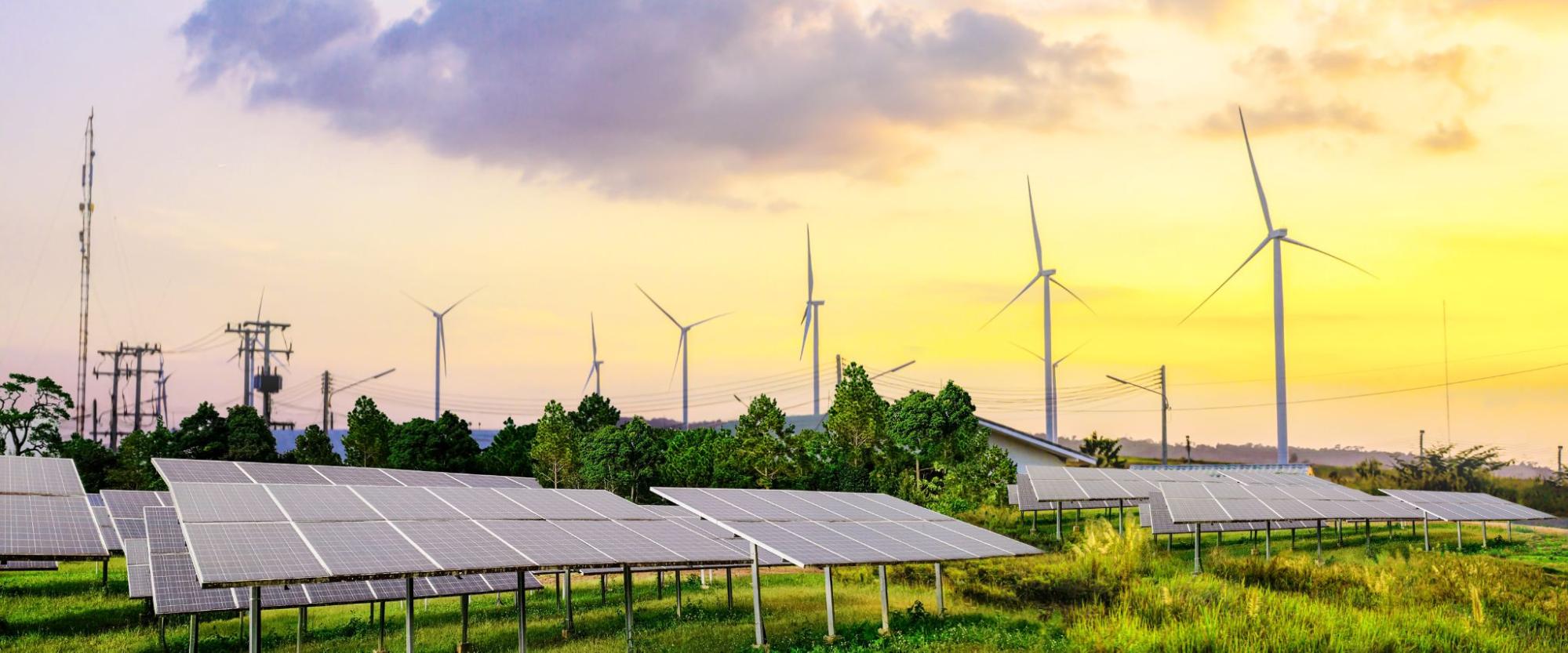2022 Renewable Energy Growth Surpasses Forecasts
The global renewable energy market is seeing higher-than-forecasted levels of growth from expedited net-zero targets tied to Europe’s energy crisis, government spending, and energy security concerns.
The International Energy Agency (IEA) recently released its Renewables 2022 report, an annual package covering trends and challenges across the global clean energy market. The latest analysis sheds light on the underlying mechanics of the worldwide energy transition, the role of newly enacted government policies and spending, accelerated decarbonization targets, and broader market dynamics such as rising prices and supply constraints.
The renewable energy market is responding to various trends and challenges. Image used courtesy of Adobe Stock
Many governments’ existing pandemic-induced concerns about energy security were only made more urgent in February 2022 when Russia invaded Ukraine—thrusting Europe’s import-reliant energy grid into crisis. Price spikes and supply chain bottlenecks in the fossil fuel market exacerbated the situation, motivating governments to diversify their energy mix by adding renewable resources.
As a result, global renewable power capacity is expected to climb 30 percent higher than 2021 forecasts, reaching 2,400 gigawatts (GW) through 2027. For scale, this amount matches China’s total power capacity of 2,400 GW as of late June, according to statistics from the country’s National Energy Administration.
The IEA expects renewables to account for more than 90 percent of this expansion over the next five years, trumping coal’s current dominance by early 2025 with a 38 percent share of electricity generation.
This chart breaks down renewables’ share of cumulative power capacity by technology through 2027. Image used courtesy of International Energy Agency’s Renewables 2022 report
Wind, Solar Far Outpace Other Renewables
The IEA projects that wind and solar photovoltaic (PV) electricity will more than double over the next five years, supplying nearly one-fifth of global power generation.
Solar PV’s installed capacity is expected to triple to nearly 1,500 GW despite rising investment costs, surpassing natural gas by 2026 and coal the following year. The IEA says utility-scale solar remains the cheapest option for new electricity generation, even though commodity price spikes have weakened the market recently.
Meanwhile, the IEA projects that global wind capacity will nearly double by 2027, as new onshore wind projects totaling 570 GW are currently in the pipeline. Also, more competition is expected in the global offshore wind market while China and the United States implement policies promoting faster expansion. But that growth will be limited due to lengthy permitting procedures and insufficient infrastructure upgrades.
However, since these two power sources are expected to claim 80 percent of renewable generation by 2027, there will be little diversification in the global energy mix. Additional technologies—such as hydropower, geothermal, and concentrated solar-thermal power—can lend more flexibility for this transition. However, cost competitiveness and lack of support from policymakers weaken their chance of mass adoption.
The International Energy Agency foresees considerable solar photovoltaic and onshore wind capacity growth over the next five years. Image used courtesy of IEA’s Renewables 2022 report (page 21)
The IEA’s report argues there’s room for further expansion beyond 2,400 GW by 2027. The capacity pipeline could grow to 3,000 GW if governments set new policies to address regulatory issues, permitting, and financing gaps.
Government Spending on Renewables Tops $1.2 Trillion
Prompted by the geopolitical catalyst of Russia invading Ukraine, governments worldwide have allocated $500 billion to clean energy investments since March 2022. After the COVID-19 pandemic began in 2020, global clean energy spending now tops $1.2 trillion, based on the IEA’s separate analysis of 1,600 government programs passed in 67 countries since March 2020.
The United States claims around half of that total, committing $559 billion primarily through the Inflation Reduction Act (which directs $370 billion for clean energy) and the Bipartisan Infrastructure Law. Both pieces of legislation prioritize low-carbon power (more than $200 billion) via tax credits and incentives, followed by electric and low-emission vehicles (more than $100 billion).
Meanwhile, the European Union accounted for another 37 percent of global spending, with member countries earmarking about $450 billion for clean energy investments.
A breakdown of government-issued clean energy investments since the start of the COVID-19 pandemic. Image used courtesy of International Energy Agency’s Government Energy Spending Tracker
The IEA’s breakdown by sector reveals where these billions are going. Low-carbon electricity tops the group, followed by a near-equal share of mass/alternative transit and energy-efficient buildings/industry. Other categories (in order of government support) include fuel innovation, low-carbon vehicles, electricity networks, workforce expansions, other people-centered transitions, and energy access.
It’s unclear to what extent the private sector would have ramped up these activities independent of record government spending. Today’s market conditions are partially driven by the prospect of federal and state grants, tax incentives, loans and other forms of financing, and the anticipated increase in procurement contracts. Growing near-term uncertainty also dampens private investment.
Still, clean energy finance markets are becoming more mainstream as investors balance the need for secure financing sources against credit risks and other factors of uncertainty. According to the International Monetary Fund’s Global Financial Stability Report, 2021 was a breakout year for the private finance market, with the main instrument being green bonds. Other methods have gained prominence over the last few years, including social and sustainability loans and bonds.










